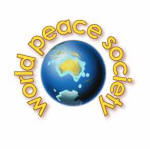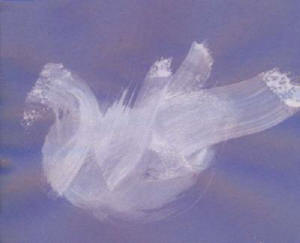
Creating a Peace Poem
 |
Creating a Peace Poem
|
Objective
Materials
Activities 1) Share an example of a haiku, rhyming poem, and of free verse. Examples: |
 |
Haiku:Butterflies are cute
|
Rhyming poem:
Yes there still is time to turn around And make all hatred cease Let's give another name to living And we can call it peace.
John Denver, musician, USA |
Free verse:
Peace is sharing, Peace is love, Peace is our freedom, That's what peace Kelsey, Grade 2, Pennsylvania, USA |
2) Explain the structure of
3) Brainstorm words or phrases as a class that are associated with "peace". Write words on a large chart for class to see result of collective brainstorming.
4) Create a class poem using the words from the list. Model the process of arranging the words in a sentence or phrases until it "feels good". Emphasize ideas, concepts, and phrases. Sometimes, the creative process is encouraged more when the teacher does not allow complete sentences.
5) Each student personally selects poetic form to record Peace Poem and writes poem down.
6) optional: Teacher makes editing changes to each student's poem - spelling, word usage, etc.
7) Student writes in own handwriting his/her final piece. A lesson from writing a haiku or poem in general is: It's not so much how many words one writes; it's the feeling conveyed to the readers and listeners. If a child is unable to write in his/her own handwriting, he/she may dictate his/her poem and sign it. We have had a 3-year-old child dictate her lines to her 6-year-old sister.
8) optional: You may repeat this process using other poetic forms, such as cinquain (2-4-6-8-2 syllables), tanka (5-7-5-7-7 syllables).
9) optional: submit peace poem to the World's Biggest Hug for Peace (email us)
Evaluation/Assessment
Extension Activity
Brief histories, observances
Aug. 6 - Hiroshima Day. Observance of the devastation caused by the H-bomb.
Oct. 2 - Birthday of Mohandas Ghandi (Born Oct. 2, 1869, India. Died Jan 30, 1948). Leader of Indian Nationalist movement who espoused a doctrine of non-violence to achieve social and political change. Led civil disobedience demonstration in S. Africa against anti-Hindu discrimination in 1893. Threatened to die by fasting to achieve social reforms. Assassinated.
Jan. 15 - Birthday of Martin Luther King (Born Jan. 15, 1929, USA.Died April 4, 1968) U.S. civil rights leader, reverend. Led black boycott in Montgomery, Alabama against segregated bus lines in 1955. Supported non-violent resistance and organized massive march on Washington, D.C. in 1963. Author, "Stride Toward Freedom," 1958. Awarded Nobel Peace Prize in 1964. Assassinated.
References and Samples of Work
|
|
|||||||
|
home • schools • top 10 actions • about us |
|||||||
copyright © www.worldpeace.org.au 2001-2025
 |
|
 |